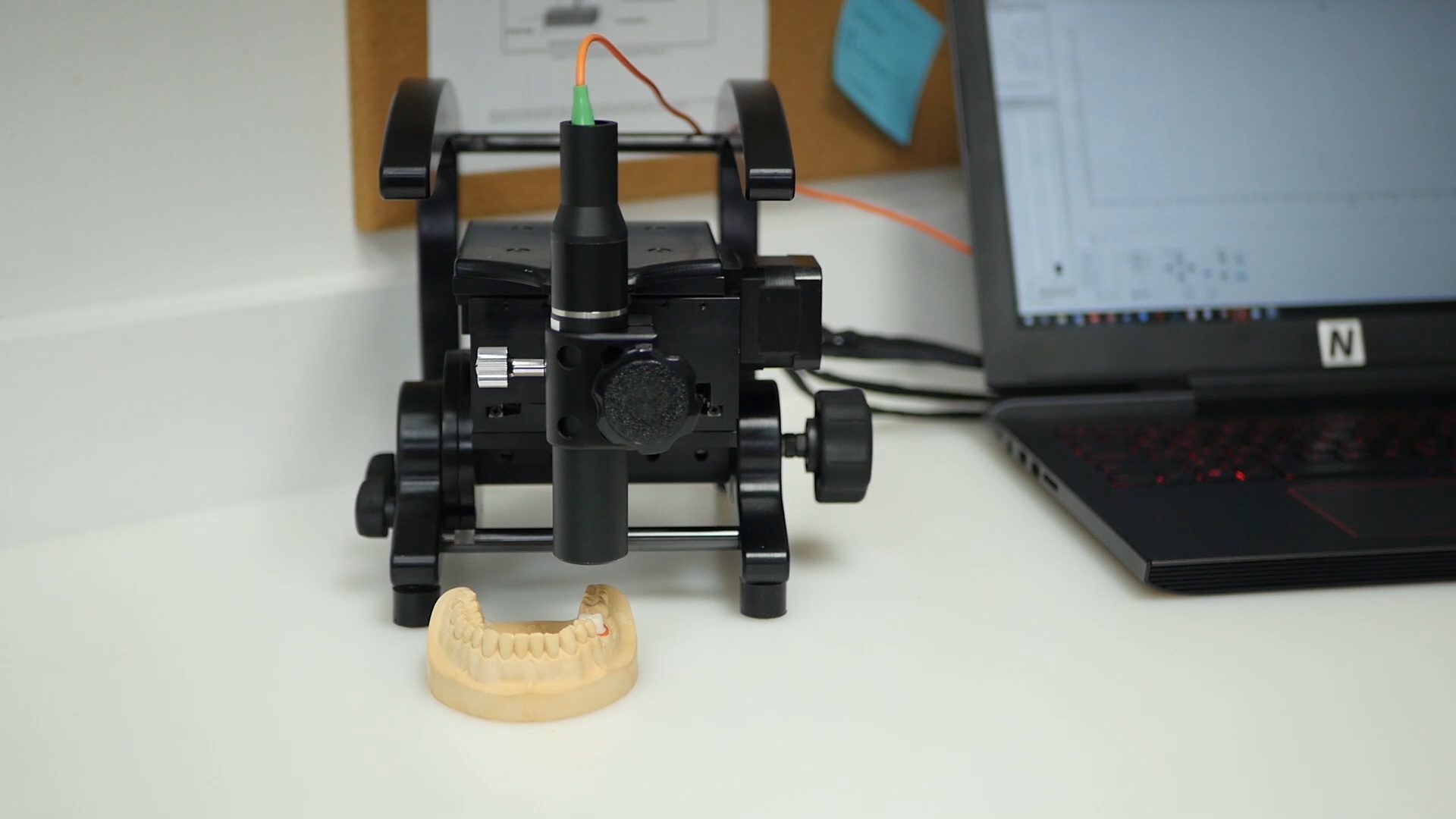
Portabilidad y flexibilidad del perfilómetro 3D sin contacto Jr25
Comprender y cuantificar la superficie de una muestra es crucial para muchas aplicaciones, como el control de calidad y la investigación. Para estudiar superficies, a menudo se utilizan perfilómetros para escanear muestras y obtener imágenes de ellas. Un gran problema de los instrumentos de perfilometría convencionales es la incapacidad de adaptarse a muestras no convencionales. Las dificultades para medir muestras no convencionales pueden deberse al tamaño de la muestra, la geometría, la imposibilidad de mover la muestra u otros inconvenientes en la preparación de la muestra. El instrumento portátil de Nanovea Perfilómetros 3D sin contactode la serie JR, es capaz de resolver la mayoría de estos problemas gracias a su capacidad para escanear superficies de muestras desde distintos ángulos y a su portabilidad.
4 Comments
Comentario
Categorías
- Notas de aplicación
- Bloque sobre tribología anular
- Tribología de la corrosión
- Pruebas de fricción | Coeficiente de fricción
- Pruebas mecánicas a alta temperatura
- Tribología de alta temperatura
- Humedad y gases Tribología
- Humedad Pruebas mecánicas
- Indentación | Fluencia y relajación
- Indentación | Resistencia a la fractura
- Indentación | Dureza y elasticidad
- Indentación | Pérdida y almacenamiento
- Indentación | Esfuerzo frente a deformación
- Indentación | Límite elástico y fatiga
- Pruebas de laboratorio
- Tribología lineal
- Pruebas mecánicas de líquidos
- Tribología de líquidos
- Tribología a baja temperatura
- Pruebas mecánicas
- Comunicado de prensa
- Perfilometría | Planitud y alabeo
- Perfilometría | Geometría y forma
- Perfilometría | Rugosidad y acabado
- Profilometría | Altura y grosor del escalón
- Profilometría | Textura y grano
- Perfilometría | Volumen y área
- Pruebas de perfilometría
- Tribología anillo sobre anillo
- Tribología rotacional
- Prueba de arañazos | Fallo adhesivo
- Prueba del rasguño | Fallo de cohesión
- Pruebas de arañazos | Desgaste en varias pasadas
- Pruebas de rayado | Dureza al rayado
- Pruebas de rayado Tribología
- Feria de muestras
- Pruebas de tribología
- Sin categoría
Archivos
- septiembre 2023
- agosto 2023
- junio 2023
- mayo 2023
- julio 2022
- mayo 2022
- abril 2022
- enero 2022
- diciembre 2021
- noviembre 2021
- octubre 2021
- septiembre 2021
- agosto 2021
- julio 2021
- junio 2021
- mayo 2021
- marzo 2021
- febrero 2021
- diciembre 2020
- noviembre 2020
- octubre 2020
- septiembre 2020
- julio 2020
- mayo 2020
- abril 2020
- marzo 2020
- febrero 2020
- enero 2020
- noviembre 2019
- octubre 2019
- septiembre 2019
- agosto 2019
- julio 2019
- junio 2019
- mayo 2019
- abril 2019
- marzo 2019
- enero 2019
- diciembre 2018
- noviembre 2018
- octubre 2018
- septiembre 2018
- julio 2018
- junio 2018
- mayo 2018
- abril 2018
- marzo 2018
- febrero 2018
- noviembre 2017
- octubre 2017
- septiembre 2017
- agosto 2017
- junio 2017
- mayo 2017
- abril 2017
- marzo 2017
- febrero 2017
- enero 2017
- noviembre 2016
- octubre 2016
- agosto 2016
- julio 2016
- junio 2016
- mayo 2016
- abril 2016
- marzo 2016
- febrero 2016
- enero 2016
- diciembre 2015
- noviembre 2015
- octubre 2015
- septiembre 2015
- agosto 2015
- julio 2015
- junio 2015
- mayo 2015
- abril 2015
- marzo 2015
- febrero 2015
- enero 2015
- noviembre 2014
- octubre 2014
- septiembre 2014
- agosto 2014
- julio 2014
- junio 2014
- mayo 2014
- abril 2014
- marzo 2014
- febrero 2014
- enero 2014
- diciembre 2013
- noviembre 2013
- octubre 2013
- septiembre 2013
- agosto 2013
- julio 2013
- junio 2013
- mayo 2013
- abril 2013
- marzo 2013
- febrero 2013
- enero 2013
- diciembre 2012
- noviembre 2012
- octubre 2012
- septiembre 2012
- agosto 2012
- julio 2012
- junio 2012
- mayo 2012
- abril 2012
- marzo 2012
- febrero 2012
- enero 2012
- diciembre 2011
- noviembre 2011
- octubre 2011
- septiembre 2011
- agosto 2011
- julio 2011
- junio 2011
- mayo 2011
- noviembre 2010
- enero 2010
- abril 2009
- marzo 2009
- enero 2009
- diciembre 2008
- octubre 2008
- agosto 2007
- julio 2006
- marzo 2006
- enero 2005
- abril 2004











Hi, Please send a quotation with the maximum discount possible. Thanks.
We currently use an optical thin film analyzer in order to measure our PTFE coating thicknesses on sacrificial silicon wafers that are coated at the same time as our products. We are looking for a way to measure the coating on an actual product that is coated. We coat anywhere between 50 nm and 10 micron, but this is not a limiting capability if the tool has a smaller range of thicknesses it can measure. Our coating is optically clear and we get very good results with our current thin film analyzer, however it does not have the capabilities of measuring on our products since the substrate needs to be reflective and flat.
Could you share some more information on any products that might be able to measure our coating thickness? Some of the substrates we are interested in measuring coating thickness on are curved aluminum substrates with a 50-150 grit texture (pretty rough) and PCB’s. I appreciate any help you could give.
hello we at thin metal parts are interested in a non contact profilometer. please call 719.268.8300ext 309 or email. thank you.
Thank you for your interest in our Profilometers. We are excited to work with you on your application!